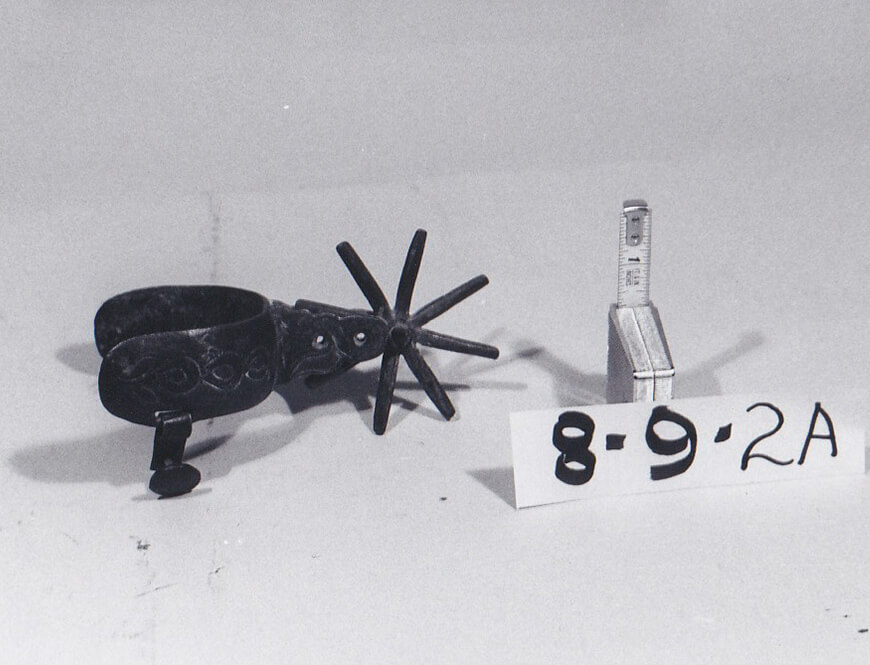Spurs are traditionally u-shaped, pointed devices secured around the back of a rider’s heel and used to urge on a horse. They are made of metal and have several different components. The u-shaped portion is referred to as a heel band (or yoke), the shank (or neck), and the rowel. The heel bang should fit snugly around the back of one’s boot to insure accuracy when using the spurs. The portion that sticks out from the back of the heel can be referred to as the shank and is usually fairly straight. It is used primarily to help the rider’s spur reach the sides of the horse to give commands. The rowel is a circular, and sometimes pointed, spinning disc attached to the end of the shank. Rowels are used to make contact with the sides of the horse, allowing the rider to give commands. Rowels were designed to make the end of the spur safer for the horse than shanks without rowels.
The spur, originally of European origin, made its way to Texas with the birth of the vaquero; these individuals have been part of Texas history since its beginning. Their name is the literal translation of the Spanish word for cow, and they were so named for their handling of cattle and horses. Their influence gave birth to their American counterparts, the cowboy. Cattle ranching had spread from Mexico to the southwestern United States by the 1700s; by this point vaqueros had perfected the arts of roping using braided rawhide reatas, branding, and riding. Cattle ranching was a small portion of the Texas economy until after the Civil War. It was then, when the northern demand for beef was so high, that many Texans began taking part in the industry.
During the fall, vaqueros would round up their herd(s), brand owner-less cattle with no previous ownership markings, and watch over the herd through winter. By spring, the cattle that were ready for market were driven to the nearest railroad town and bought by eastern buyers. As the frontier extended west, the United States grew rapidly in population; as a result, cattle herding grounds were cut in half with the expansion of railroads and the US Government selling lands to private buyers. Because of this, the cattle industry was rapidly on the decline by the late 1800s. Cowboys are still around today, but with corporations mass-producing meat, their lands and our dependence on them is much smaller.
